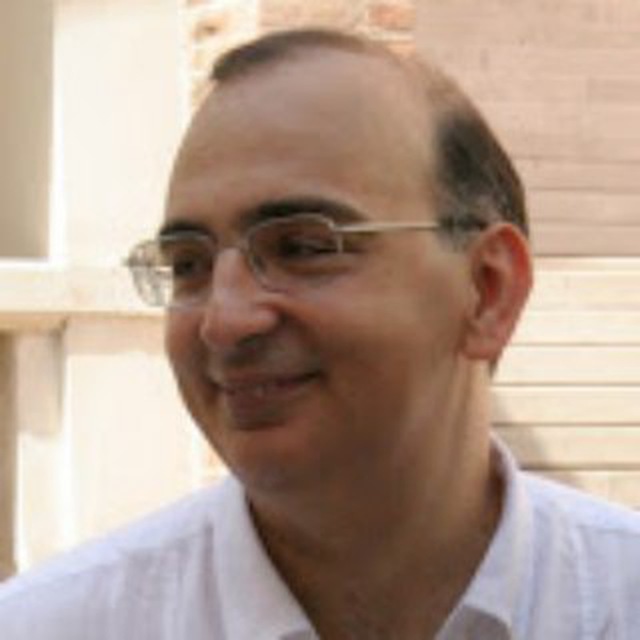|
|
|
|
|
|
|
|
|
|
|
|
|
|
|
|
Papers:
List Papers;
(with Abstracts);
Curriculum (in Italian):
long version ;
short version;
in English:
long version.
Google Scholar profile.
ResearchGate page.
Orcid ID.
Scopus Author ID.
Web of Science Researcher ID,
Mathematical Reviews page,
Zentralblatt page,
IRIS-CINECA bibliometric parameters (italian ASN) [2024].
English C1 badge.
![]()
Programs and numerical results for the paper
'Sequences of integers generated by two fixed primes'
by A. Languasco, F. Luca, P. Moree and A. Togbé
In this page I (A. Languasco) include my programs (Pari/GP scripts) developed to obtain the numerical results described in the paper [2], co-authored with Florian Luca, Pieter Moree and Alain Togbé.
In this paper we study some properties of the sequence of the S-units (built with two prime factors):
Let p,q be two primes with p < q. We let (ni), i ≥0 be the sequence of consecutive integers of the form n=pa qb with a,b ∊ ℕ.
We call this sequence the S-units formed with the two primes p, q.
We provide here the programs used to obtain the values showed into [2] about the following two problems.
Distance for consecutive values of ni: Let p,q be two primes with p < q and (ni), i ≥0 be the sequence of S-units built with such primes.
There exist effective constants D1(p,q), D2(p,q) such that ni/ (log ni)D1(p,q) < ni+1 - ni < ni/ (log ni)D2(p,q), where ni ≥ 3.
Let also D1 = maxp,q D1(p,q) and D2 = minp,q D2(p,q), ρi(p,q) = (log ni - log (ni+1 - ni) )/(log log ni) and μ(p,q) = 1/k ∑i=1kρi(p,q), where k = #{ρi(p,q) ≥ 0}.
Bertrand's Postulate for S-units: Given any real number α>1, np,q(α) is the smallest integer such that every interval [n,nα) with n ≥ np,q(α) contains an integer of the form pa qb for every integer ≥ np,q(α).
Bertrand's Postulate type results arise on taking α=2.
For more on the definitions of these quantities and our results, please refer to [2].
I have to state the obvious fact that if you wish to use some of the softwares below for your own research, you should acknowledge the author and cite the relevant paper in which the program was used first. In other words, you can use them but you have to cite the paper of mine that contains such programs. If you are wondering why I am stating something so trivial, please have a look at P0 here: A.Languasco-Programs
Pari/GP scripts
constants_pq_left_right.gp: Pari/GP script. It can be used via gp2c. The function to be run is: constants_pq_left_right(P, LOOP)
Input: P: is the upper bound on the size of the used primes p < q ≤ P used in the actual computations; LOOP (default = 10^4): is the total number of neighbors (left/right) generated. We will consider only the elements ni ≥ max(3, exp(log p * log q)).
Output: it computes D1(p,q), D2(p,q), μ(p,q), C1(p,q), C2(p,q), C3(p,q), C4(p,q) as defined in the paper [2].
The program uses the continued fraction approach to generate LOOP left (ni-1) and right neighbors (ni+1) of ni; see [1] and [2]. The output is saved a .csv file.
In the folder constants-results you'll find the result of this computation for few values of P and LOOP.
This program is available at the following CodeOcean Capsule.
npq_alpha_warp9.gp: Pari/GP script. It can be used via gp2c. The function to be run is: npq_alpha(P, α)
Input: P is the upper bound on the size of the used primes p < q ≤ P used in the actual computations; α (default = 2) is the value in the definition of the intervals [n,nα) we are veryfying Bertrand's postulate for n being in the S-units sequence (formed with such two primes).
Output: it computes npq_alpha as defined before.
The program uses the continued fraction approach to generate an S-unit less than ni; see [2]. The output is saved a .csv file.
In the folder npqalpha-results you'll find the result of this computation for few values of alpha.
This program is available at the following CodeOcean Capsule.
Results
The results presented in [2] can be retrieved in the folders constants-results and npqalpha-results.
References
Some of the papers connected with this project are the following.
[1] A. Bérczes, A. Dujella, L. Hajdu - Some Diophantine properties of the sequence of S-units - J. Number Theory 138 (2014), 48--68.
[2] A. Languasco, F. Luca, P. Moree, A.Togbé - Sequences of integers generated by two fixed primes - submitted, 2023. Computational part. CodeOcean capsule.
Ultimo aggiornamento: 28.09.2024: 11:32:14
Go to the
DEI Department
Home Page
|
|
|
|
|
|
|
|
|

